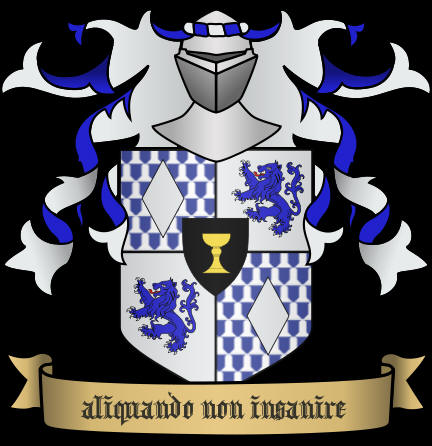Introduction
The original use of heraldry was to act as a sign on the battlefield, so that knights fully clad in armour could be easily distinguished one from another. The common practice was for a knight or lord to display the same design on his banner, cloak and shield. This evolved over the centuries, and specific rules were set down which prevented any two individuals from bearing the same design. Official heraldry in Britain was introduced by the Normans, and most heraldic terms are based on the Anglo-Norman language of the time.
So, it is customary to display the family badge on some kind of shield, which is filled using three basic types of colour and pattern: metals, colours & stains known as tinctures, and patterns formed from animal skins which are termed furs. The background portion of the shield is known as the field, which may be divided in various ways. Then, any of a huge number of symbols or "charges" may be added, the simplest of which are known as ordinaries. There are rules for placing colours, which are designed to give a good contrast to the various elements of a coat of arms: a metal should not be placed on a metal, nor a colour on another colour. Furs are regarded as neutral, and can be used with both metals and colours, as long as the elements still produce good visibility.
The shield seems to be described from the point of view of the person carrying it, so the dexter or right side of the shield is actually the left side of the image. However, this is incorrect. The term "dexter" is used to mean "main" rather than "right-hand side", with the shield being read from left-to-right, top-to-bottom like a document (in English). The following diagram should help to decode some of the terms which are commonly used.
Whilst the basic shapes and colours for heraldic shields are specified, there is a lot of leeway for the artist to elaborate the charges. Therefore many variations of a single symbol are possible, and in theory would be equally valid. However, it is fairly common for a specific one of these variations to become associated with the arms of a particular country or person. A good example is the harp depicted on the coat of arms of Great Britain to symbolize the Irish coat of arms - the British version usually depicts a harp with the body of a woman, the Irish one does not !
Charges
Arms created by the Online Heraldry Generator


